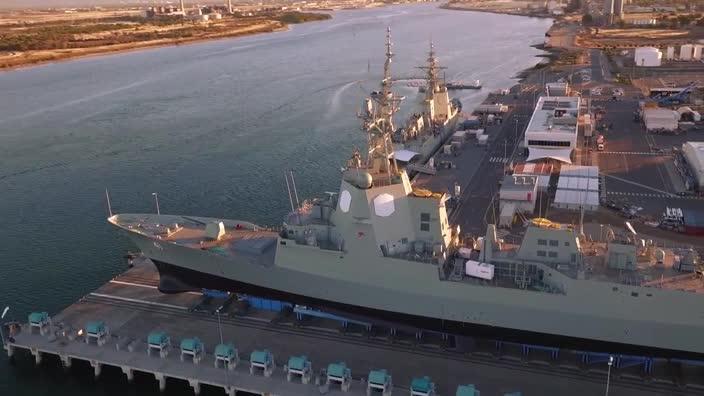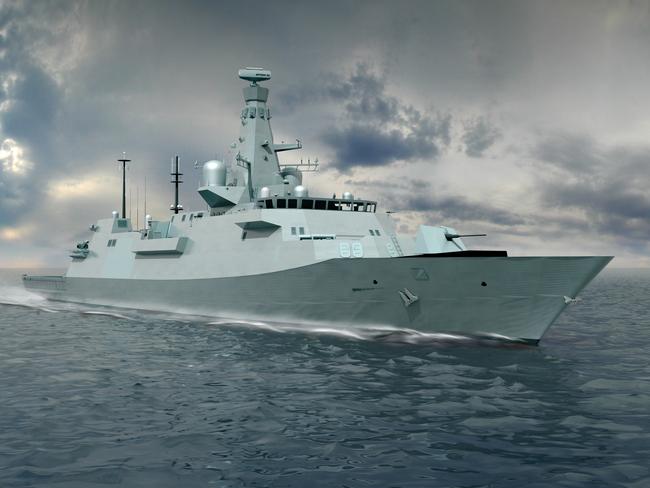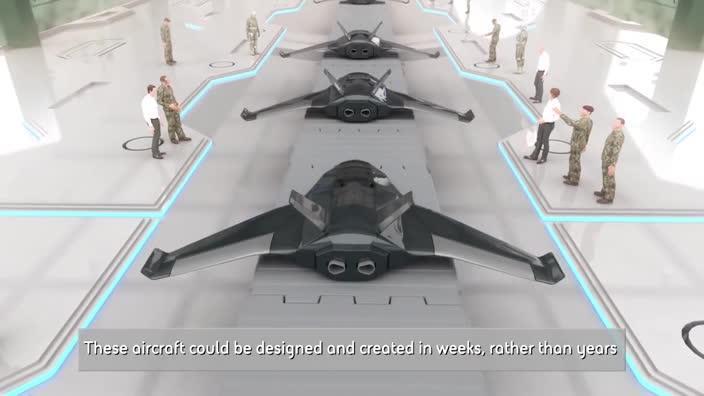Stealthy submarine-hunting warship could be exported from Adelaide, $30bn Future Frigates contender BAE says
A STEALTHY submarine-hunting warship could be exported from Adelaide to the world, one of the contenders for the $30 billion Future Frigates program says.

- SA set for tiny part of $89bn defence shipbuilding work
- Osborne naval shipyard transformed by $1.2 billion upgrade
- SAAB to invest $40m on Defence Institute ahead of jobs boom
A STEALTHY submarine-hunting warship could be exported from Adelaide to the world, one of the contenders for the $30 billion Future Frigates program says.
In Glasgow on Wednesday night, BAE cut the first steel on its Type 26 frigate, which is the basis for a bid to build Australia’s frigates.
BAE commercial director Nigel Stewart said exporting warships from Australia was an “ambition” and the United Kingdom and Australia would be able to sell to friendly countries.
He also said it was possible it could use the Adelaide shipyard as a base, potentially creating thousands of jobs.
The keel-cutting was a major step in the UK program, which has been criticised as being only a “paper ship” because BAE doesn’t yet have a version of the ship in the water.
The company will compete against Spain’s Navantia and Italy’s Fincantieri in a three-way tender. Both Spain and Italy have operational frigates.
This week BAE gave The Advertiser in-depth briefings on the 7000-tonne frigate it is building for the Royal Navy. Some components are already being tested on existing ships while the rest have been digitally developed.

Defence Industry Minister Christopher Pyne sparked controversy last week when he said he would like Australia to become a major arms exporter, but critics including World Vision’s Tim Costello said that would be “profiting from bloodshed”.
Both the UK and Australia are building their maritime defences amid global unrest, including troubles with Russia and tension in the South China Sea.
The Australian frigates’ core mission will be spotting and fighting submarines. The Government expects that about half the world’s submarines will be operating in the region within 20 years.
Rogue state North Korea has more subs than any other country, including the US.
Warships would be used to spot submarines, track them and, if necessary, “kill” them. The most effective way to do that once a frigate has spotted the enemy is to drop a missile from a helicopter or aeroplane — all it needs to do is punch a hole in a submarine’s hull and the water pressure will crush the boat or crack its hull, destroying it.

To do that, the frigates need to be invisible to the submarines. In Scotland this week BAE showed The Advertiser how it will achieve stealth by using top-secret technology as well as some more obvious tricks — such as quietly flushing toilets.
The Future Frigates will include suspension on internal machinery, water pipes designed to be quiet, and stealth technology on the hulls.
To spot submarines, the ships will use sonar as well as non-acoustic technology, such as spotting a submarine when it surfaces or even when it streams phosphorescence, making it visible underwater.
BAE confirmed thousands of jobs would be created by the frigates program.
Mr Stewart said BAE did not have the space or the inclination to build in the UK, and the work — including the supply chains — would be done through its Australian operations.
He also confirmed it would use Australian steel.
Its program is expected to sustain about 2000 jobs, with another 3500 through the supply chain.
The reporter was a guest of BAE.
